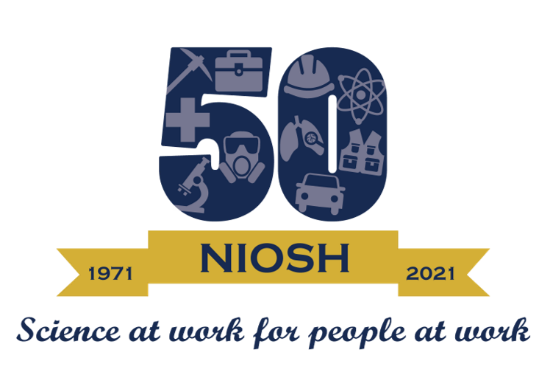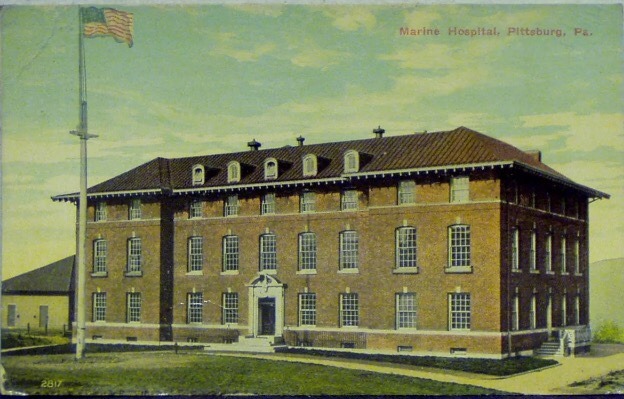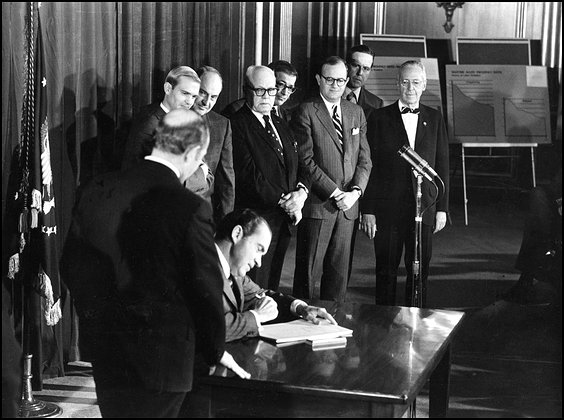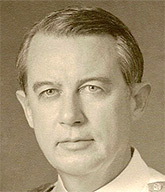NIOSH Celebrates 50 Years in 2021
Posted on by In 2021 we will celebrate the 50th anniversary of the National Institute for Occupational Safety and Health (NIOSH). Congress passed the Occupational Safety and Health Act of 1970 that created NIOSH “to assure so far as possible every working man and woman in the Nation safe and healthful working conditions.” NIOSH began operating on April 28, 1971.
In 2021 we will celebrate the 50th anniversary of the National Institute for Occupational Safety and Health (NIOSH). Congress passed the Occupational Safety and Health Act of 1970 that created NIOSH “to assure so far as possible every working man and woman in the Nation safe and healthful working conditions.” NIOSH began operating on April 28, 1971.
This month we begin the yearlong commemoration of our 50th anniversary which includes a blog series and an eNews and Research Rounds series highlighting research and milestones from the past 50 years.
To kick off our celebration we’ve included some lesser-known facts about the early years. We invite you to share a favorite NIOSH memory from the past or tell us how NIOSH research has made a difference in protecting America’s workers.
The Creation of NIOSH
-

Pittsburgh Marine Hospital NIOSH’s earliest predecessor was the U.S. Public Health Service (PHS) Office of Industrial Hygiene and Sanitation, established in 1914. This makes it much older than the Centers for Disease Control and Prevention (CDC), whose earliest predecessor only goes back to 1942, and OSHA, whose predecessor dates to 1934.
- The Office of Industrial Hygiene’s first home was the Pittsburgh Marine Hospital. This building still exists and is currently the headquarters of the Allegheny County Health Department.
- The Office of Industrial Hygiene became the Division of Industrial Hygiene and was part of the National Institute of Health (NIH) in the 1930s and 1940s. When the NIH Bethesda campus first opened in 1938, one of its first three buildings was devoted to industrial hygiene. This may have been because NIH Director Lewis R. Thompson was an industrial hygienist. That building still stands today, as Building 2 on the NIH campus.
- The Division of Industrial Hygiene moved to Cincinnati in 1950. The Division conducted research from a converted warehouse on Broadway in downtown Cincinnati for a quarter century and moved into the Robert A. Taft Sanitary Engineering Center in 1976 (one of two Cincinnati sites NIOSH works from today).
- Bills for the protection of worker safety and health were proposed by President Johnson’s administration in 1968 but were not passed by Congress before its session ended. The bills were re-introduced during the Nixon administration in 1969.
- Proponents of legislation that would become the Occupational Safety and Health Act, creating OSHA and NIOSH, modeled it after the Federal Coal Mine Safety and Health Act of 1969, passed to better mining conditions that were causing black lung disease and fatal and crippling accidents among coal miners.
-

President Richard M. Nixon signs the OSH Act on December 29, 1970. The Occupational Safety and Health Act was signed into law on December 29,1970 by President Nixon. Section 22 of the Act authorizes the creation of NIOSH.
- Senator Jacob Javits contributed the part of the OSH Act that created NIOSH.
- The Bureau of Occupational Safety and Health became part of NIOSH under the Act. The Appalachian Laboratory for Occupational Respiratory Diseases, which had been created within the PHS in 1967 to focus on black lung disease research, was also incorporated into NIOSH. The lab was initially housed in the basement of the West Virginia University Health Sciences Center. It moved to its new building in Morgantown, West Virginia in 1971. West Virginia Senator, Robert C. Byrd, was the principal speaker at the dedication. In 1996, Byrd was also the keynote speaker at the dedication of the new NIOSH Morgantown building, which is connected to the original building. He was an avid NIOSH supporter until his death in 2010.
- NIOSH was originally part of the short-lived Health Services and Mental Health Administration and was transferred into what was then called the Center for Disease Control (CDC) in 1973.
- The Bruceton Research Center near Pittsburgh is NIOSH’s oldest facility. It was founded in 1910, but it didn’t become part of NIOSH until 1996 when the U.S. Bureau of Mines (USBM) Health and Safety Research Program, housed in the Pittsburgh and Spokane Research Centers, was transferred to NIOSH.
- In April 1951, the USBM moved its Northwest Region’s Mining Division to Spokane, WA, opening the doors to what eventually became the NIOSH Spokane Research Laboratory. The division had been located in Albany, OR, but increased mining in Idaho and Montana during the late 1940s made it desirable to locate an office closer to the mining region.
-

RAMD Marcus M. Key, MD The NIOSH headquarters was initially located in the Parklawn Building at 5600 Fishers Lane, Rockville, MD (in the building that now houses four of the eight PHS agencies-HRSA, IHS, AHRQ, and SAMHSA). In 1981, the headquarters was moved to Atlanta to co-locate with CDC headquarters. In 1994, the headquarters moved back to Washington, D.C., though offices are still maintained in Atlanta.
- Upon its creation, NIOSH had 475 employees. Today NIOSH has nearly 2,000 researchers, support staff and contractors in eight locations including: Anchorage, Alaska; Denver, Colorado; Washington, DC; Atlanta, Georgia; Cincinnati, Ohio; Pittsburgh, Pennsylvania; Spokane, Washington; and Morgantown, West Virginia.
- There have been six NIOSH Directors. The first director was RADM Marcus M. Key, MD, who served from 1971-1975. (Watch for an upcoming blog on the NIOSH Directors).
Julie Tisdale-Pardi, MA, is the NIOSH Science Blog Coordinator.
John P. Sadowski, PhD, is the NIOSH Wikipedian-in-Residence.
Barbara L. Jenkins, MA, CA, is a Public Health Analyst in the NIOSH Division of Field Studies and Engineering and a Certified Archivist.
This blog is part of a series for the NIOSH 50th Anniversary. Stay up to date on how we’re celebrating NIOSH’s 50th Anniversary on our website.
Posted on by

